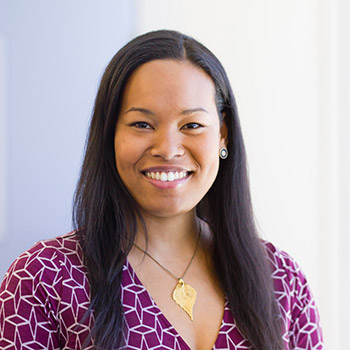At CEP, we have always prided ourselves on a commitment to diversity among our staff and to building a culture of inclusion. Diversity “done right” has a slew of benefits, including innovation and improved productivity. But how do organizations attract and retain the talented and diverse staffs they need to be successful? At CEP, like so many other organizations, we’re pushing ourselves on this front. We don’t know how our efforts compare to others, but we wanted to share the steps we’ve taken — and invite other organizations to share their stories, too.
Since CEP’s beginnings, in 2001, we have devoted energy to attracting and retaining a talented and diverse staff. The diversity of our staff has of course fluctuated over the years — and of course racial diversity isn’t the only dimension of diversity we consider. We’re committed to being a welcoming and diverse place in ways that go beyond this dimension, including sexual orientation, gender identity, and physical disability.
We have also focused, from the beginning, on our culture and how we work together. We periodically assess the differences in the ways in which we are inclined to work together, using resources such as DiSC assessments, which reflects our commitment to understanding and valuing diversity of personality among staff. Measuring engagement and inclusion is especially important to us, and we do that annually by having a third party survey our staff through the Staff Perception Report (SPR), the same assessment we use with foundation clients.
We have also sought to ensure staff in a variety of life stages, with different responsibilities, feel valued at CEP. For example, we provide the opportunity for staff to have flexible working arrangements, when needed, following the lead of organizations like Bridgespan, who we have viewed as trailblazers in this area. We allow telecommuting one day a week. Perhaps most important, we are flexible. We believe in giving staff what they need to feel supported both in times of joy, like the birth of a child, and in times of sadness or crisis.
We also do our best to ensure we give staff what they need to be successful in their roles. We have a robust orientation, a mentoring program, and we provide professional development opportunities. We’re committed to giving staff the tools and technologies they need to be successful. And, like most organizations, we have standard processes in place such as exit interviews to further measure the feelings of departing staff.
OK, so maybe all of this is standard fare — not so much differentiators as simply what it takes to be competitive in today’s market for talent.
In the last couple of years, as CEP has grown and we have increased our hiring, we realized we wanted to do more — both to increase diversity on our staff and to strengthen our inclusive culture. We’ve started by evaluating the ways in which our recruiting practices match up with our ideals and values, and we’ve taken the opportunity to experiment (for example, with different screening and interview approaches).
We have worked harder to ensure that we are casting a wide net in the recruiting process. Looking closely at data we collected over time helps us to understand whether or not our sources for recruiting are giving us qualified, diverse candidates. We now concentrate on the places where we have found the most diverse, talented candidates, and we continually monitor data to ensure we’re going to the most fruitful sources. And while we share our postings within our personal, professional, and alumni networks, we have grown more careful to ensure we aren’t overly reliant on those groups.
Additionally, in our hiring process, when possible, we expanded our use of objective skill assessments (such as statistics or Excel tasks) in an attempt to take some of the bias out of the process. When possible, we administer these skill assessments before we ever meet a candidate in person to root out the opportunities for bias to creep in. We documented our strategies for recruiting in order to create as much process uniformity across interviews and candidate assessments as possible. This ensures that we are providing all candidates with equal opportunity to demonstrate their qualifications.
Finally, we have paid even more attention to our culture. We held optional training sessions about implicit bias in which staff discussed the ways in which bias can influence our work and our actions. (We’ve found great examples in sessions that Facebook and Google have made public.) And we have documented both what is good about our culture and what we aspire to through a cross-team task force we created that sought feedback from the entire staff.
Looking ahead, we are seeking to push further. We plan on developing optional demographic questions to measure the diversity and inclusiveness of our candidate pool, on the theory that if you don’t measure, you can’t learn and improve. We will also begin redacting certain personal information from the interview process, such as names and education information, which might create bias before an interview takes place.
Outside of the hiring process, a member of our staff is working to obtain a Diversity Certification, and we will continue to hold sessions with staff on inclusion. (For example, we viewed and discussed as a staff Deloitte’s session on “covering” and its effects on work productivity.) And, of course, we plan on continuing to learn from our peers in the nonprofit sector. We’ve found inspiration and practical guidance in Vu Le’s terrific blog posts and in resources developed by the D5 Coalition, among others.
When we reflect, four things emerge that have been particularly important to these efforts:
- Leadership that is supportive, encouraging, and committed to evaluating and innovating in these areas. This is essential to continued learning and improvement.
- A shared understanding of how diversity, equity, and inclusion (DEI) fits into our organization’s goals and strategies. There is clarity and consensus about the connection between our DEI work and our effectiveness.
- Open, trusting, and respectful staff. Some of the issues and principles surrounding DEI can be difficult to talk about, especially in a professional setting. One thing that aids progress on this issue is the trust, openness, and dedication of staff to participate in the conversations, to be able to publicly or privately check each other on biases which might creep in, and to champion these ideals in their day-to-day work.
- Capacity. As a 45-person nonprofit with two offices, it has been immensely helpful to have the dedicated space and time to think about and research these issues and to conduct all-staff trainings and discussions. Having dedicated internal resources has been effective for us.
Nonprofit employers have both an opportunity and a responsibility to ensure that they are attracting and retaining diverse talent and fostering a culture in which each person feels valued, respected, and able to fulfill their promise. We are looking forward to continuing to hone and develop our efforts, and hearing about and learning from yours.
Alyse d’Amico is director of human capital and special assistant to the president at CEP. Leaha Wynn is senior coordinator – human capital at CEP. You can reach them at alysed@cep.org and leahaw@cep.org, respectively.





